#choctaw hog
Text
y'all i found people near-ish me that are into livestock conservancy and they have meishan pigs. they have them!! gosh i hope one day i can move out of the city and have a little farm and have a meishan pig, i would be so happy.
#they also have ossabaw hogs. i WISH they had choctaws.#did see someone with tamworths though.#but meishans.....my babies.......#loyal talks about stuff and things
53 notes
·
View notes
Text
youtube
you guys want to go to a pig cafe in Japan?
(put on CC for english subtitles)
This sorta lead me down a rabbit hole (or I guess a pig hole) to figure out what a mini pig is. Apperently there are only four official breeds of domesticated micro pigs
Vietnamese Pot-bellied (which I think is the breed in the video)
Göttingen minipig
Choctaw Hog
Juliana pig
in the comments they talk about common Q&A's

theres no such thing as a teacup pig.....So this might just be a shitty roadside animal attraction.
But I did learn about this rare Chinese pig breed called a Meishan (theyer one of the oldest domesticated breeds.) And I think theyer kinda neat.
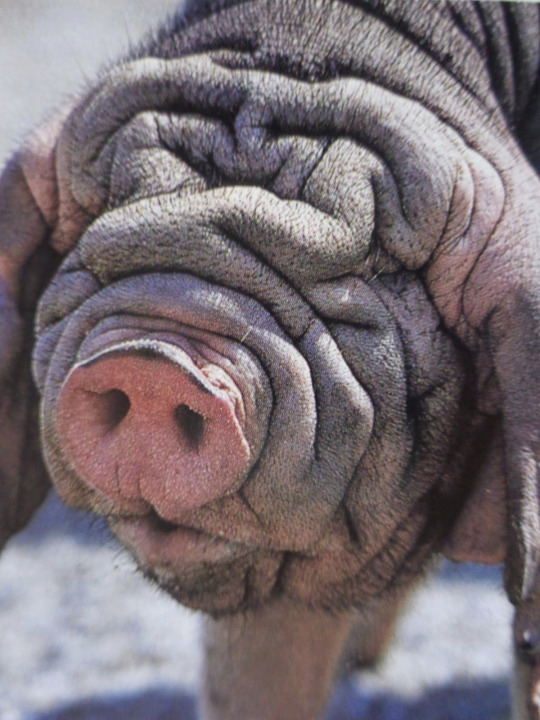



I like their floppy ears
10 notes
·
View notes
Text
Today’s swine is another critically endangered one, the Choctaw hog, which is most prevalent in the Choctaw Nation in southeastern Oklahoma. The Choctaw hog, much like the Mulefoot hog, is descended from Spanish swine brought to the Americas in the 1500s.

3 notes
·
View notes
Text
My favourite Suids

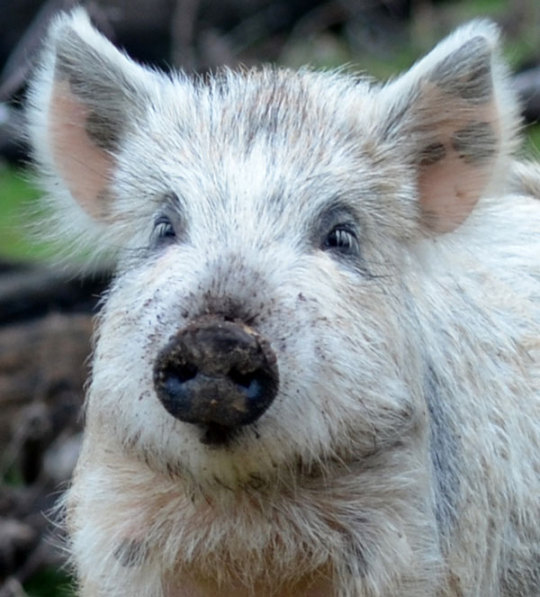
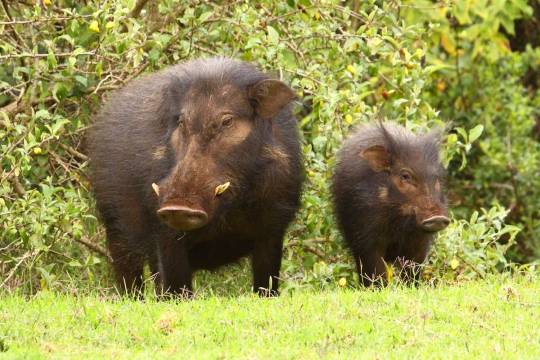
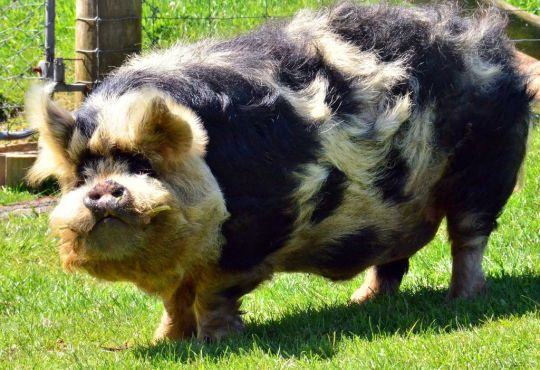
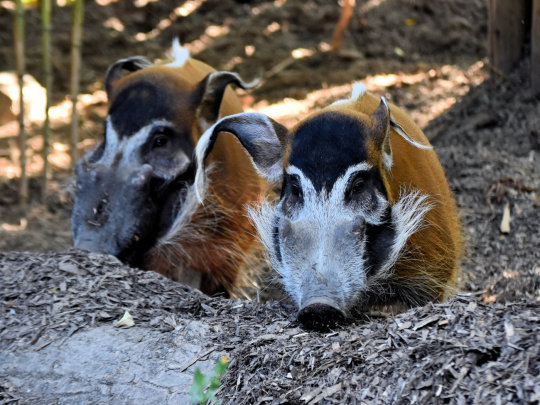



#favourites#favourite animals#suids#suidae#pigs#bornean bearded pig#choctaw hog#giant forest hog#kunekune pig#domestic pig#red river hog#visayan warty pig#warthog#wild boar
128 notes
·
View notes
Photo

*UPDATE: You can now purchase this print from my etsy shop
https://www.etsy.com/listing/655497338/
#pigs#wild pigs#wild boar#red river hog#warthog#ossabaw pig#juliana pig#visayan warty pig#babirusa#choctaw pig#swine#hogs#berkshire pig#yorkshire pig#gloucestershire old spots pig#gottingen pig#pietrain pig#vietnamese potbellied pig#danish protest pig#british saddleback pig#tamworth pig#mangalitza pig#meishan pig#kunekune pig#mini pigs#heritage pigs#year of the pig
1K notes
·
View notes
Photo




Native American Heritage Month: Fiction Picks
My Heart Is a Chainsaw by Stephen Graham Jones
In her quickly gentrifying rural lake town Jade sees recent events only her encyclopedic knowledge of horror films could have prepared her for
Jade Daniels is an angry, half-Indian outcast with an abusive father, an absent mother, and an entire town that wants nothing to do with her. She lives in her own world, a world in which protection comes from an unusual source: horror movies…especially the ones where a masked killer seeks revenge on a world that wronged them. And Jade narrates the quirky history of Proofrock as if it is one of those movies. But when blood actually starts to spill into the waters of Indian Lake, she pulls us into her dizzying, encyclopedic mind of blood and masked murderers, and predicts exactly how the plot will unfold.
Yet, even as Jade drags us into her dark fever dream, a surprising and intimate portrait emerges… a portrait of the scared and traumatized little girl beneath the Jason Voorhees mask: angry, yes, but also a girl who easily cries, fiercely loves, and desperately wants a home. A girl whose feelings are too big for her body.
My Heart Is a Chainsaw is her story, her homage to horror and revenge and triumph.
The Removed by Brandon Hobson
In the fifteen years since their teenage son, Ray-Ray, was killed in a police shooting, the Echota family has been suspended in private grief. The mother, Maria, increasingly struggles to manage the onset of Alzheimer’s in her husband, Ernest. Their adult daughter, Sonja, leads a life of solitude, punctuated only by spells of dizzying romantic obsession. And their son, Edgar, fled home long ago, turning to drugs to mute his feelings of alienation.
With the family’s annual bonfire approaching—an occasion marking both the Cherokee National Holiday and Ray-Ray’s death, and a rare moment in which they openly talk about his memory—Maria attempts to call the family together from their physical and emotional distances once more. But as the bonfire draws near, each of them feels a strange blurring of the boundary between normal life and the spirit world. Maria and Ernest take in a foster child who seems to almost miraculously keep Ernest’s mental fog at bay. Sonja becomes dangerously fixated on a man named Vin, despite—or perhaps because of—his ties to tragedy in her lifetime and lifetimes before. And in the wake of a suicide attempt, Edgar finds himself in the mysterious Darkening Land: a place between the living and the dead, where old atrocities echo.
Drawing deeply on Cherokee folklore, The Removed seamlessly blends the real and spiritual to excavate the deep reverberations of trauma—a meditation on family, grief, home, and the power of stories on both a personal and ancestral level.
The Hatak Witches by Devon A. Mihesuah
After a security guard is found dead and another wounded at the Children’s Museum of Science and History in Norman, Oklahoma, Detective Monique Blue Hawk and her partner Chris Pierson are summoned to investigate. They find no fingerprints, no footprints, and no obvious means to enter the locked building.
Monique discovers that a portion of an ancient and deformed skeleton had also been stolen from the neglected museum archives. Her uncle, the spiritual leader Leroy Bear Red Ears, concludes that the stolen remains are those of Hatak haksi, a witch and the matriarch of the Crow family, a group of shape-shifting Choctaws who plan to reestablish themselves as the powerful creatures they were when the tribe lived in Mississippi. Monique, Leroy, and Chris must stop the Crows, but to their dread, the entities have retreated to the dark and treacherous hollow in the center of Chalakwa Ranch. The murderous shape-shifters believe the enormous wild hogs, poisonous snakes, and other creatures of the hollow might form an adequate defense for Hatak haksi.
But what no one counts on is the unexpected appearance and power of the Old Ones who guard the lands of the Choctaw afterlife. Blending tribal beliefs and myths into a modern context, The Hatak Witches continues the storyline of Choctaw cosmology and cultural survival that are prominent in Devon A. Mihesuah’s award-winning novel, The Roads of My Relations.
Firekeeper's Daughter by Angeline Boulley
As a biracial, unenrolled tribal member and the product of a scandal, eighteen-year-old Daunis Fontaine has never quite fit in, both in her hometown and on the nearby Ojibwe reservation. Daunis dreams of studying medicine, but when her family is struck by tragedy, she puts her future on hold to care for her fragile mother.
The only bright spot is meeting Jamie, the charming new recruit on her brother Levi’s hockey team. Yet even as Daunis falls for Jamie, certain details don’t add up and she senses the dashing hockey star is hiding something. Everything comes to light when Daunis witnesses a shocking murder, thrusting her into the heart of a criminal investigation.
Reluctantly, Daunis agrees to go undercover, but secretly pursues her own investigation, tracking down the criminals with her knowledge of chemistry and traditional medicine. But the deceptions—and deaths—keep piling up and soon the threat strikes too close to home.
Now, Daunis must learn what it means to be a strong Anishinaabe kwe (Ojibwe woman) and how far she'll go to protect her community, even if it tears apart the only world she’s ever known.
#Fiction#mystery#mysteries#thrillers#horror#to read#tbr#books to read#Book Recommendations#reading recommendations#Native American Heritage Month#NAHM#library books#new books#booklr#book tumblr#books to check out
87 notes
·
View notes
Photo

Choctaw Indian Pony -
“Researching the history of the Choctaw horse (pronounced CHOCK-taw)—also known as the Choctaw Indian Pony—is like tracing the delicate lines of a once colorful thread woven throughout a time-worn and fading tapestry. I was transfixed, awed, enchanted and, at times, deeply saddened as the fabric of this endangered breed’s story unraveled before me, most of it left out of our school history curriculums…The Choctaw horse is a Colonial Spanish horse, though you will rarely hear them referred to by this name. Easily confused with the wild horses the Bureau of Land Management (BLM) oversees, they are often called “mustangs,” a term frequently and indiscriminately conferred on any feral horse of any genetic background. Today, only a very small number of feral horses (mustangs) bear the true Spanish type and breeding. Overall, Colonial Spanish horses of all bloodlines number about 3,000, while the total number of pure Choctaw horses is only about 250 animals. The surviving Colonial Spanish Choctaw horses, however, are proven to be direct descendants of horses brought to the New World in the 1500s by the Spanish Conquistadors. Dr. Phillip Sponenberg, Professor of Pathology and Genetics at Virginia Tech University has devoted much of the last thirty years to ensuring the genetic integrity of the breed’s survival. “Colonial Spanish Horses are of great historic importance and are one of only a very few genetically unique horse breeds worldwide. Choctaw horses are one of a handful of distinct Native American tribal strains of Colonial Spanish Horse that are surviving by a thin thread,” he explains. The mythology of the Choctaw horse is complex, romantic and heart-rending.
While it may seem strange to envision Native Americans without horses, it wasn’t until the 1600s that indigenous Americans living in the deep South first encountered the animals. Hernando de soto and his invading Spaniards, searching for the mythical Seven Cities of Cibola (rumored to be overflowing with gold and riches) were the first to ride horses into Mississippi. The local Choctaw people dubbed the mysterious animals “spirit dogs.” The seemingly friendly Spaniards soon proved otherwise. In the ensuing struggles, the brave and noble Choctaw managed to retain their rightful land and avoid enslavement—and they acquired a few of the Spaniards “spirit dogs,” as well.
In addition to horses, the Spanish also introduced cattle, goats, sheep and hogs to the native population. The Choctaw soon became adept at raising livestock, and the “spirit dogs” quickly became an integral part of the Choctaw culture. The characteristics and traits of the small and sturdy horses facilitated their deep integration into tribal life. They were athletic and possessed great endurance, with sound legs and tough hooves. Despite their smaller stature of 13.2-14.3 hands, the horses were able to carry a 200 plus pound man in 50 and 100 mile races. The equines quiet, people-oriented dispositions endeared them to the Choctaw and the animals soon became indispensable in hunting and farming.
Interestingly, the Choctaw women were considered “keepers of the horse,” according to screenwriter John Fusco whose movie Hidalgo was the story of Frank Hopkins and his Indian pinto pony.
‘The men did the hunting and it was their wives’ task to track and locate the kill on horseback, with little more than a broken twig here and there to mark the trail. On her sunset-and cornsilk-colored pony the Choctaw Woman would ride into a tangled maze of indigo bush and brambles, follow the trail without breaking gait, and locate the gift deer. Even five moons pregnant it didn’t matter; her Choctaw pony was born gaited, like riding a cloud. With her knife she’d dress the deer and sling the heavy meat up across the packsaddle. Laying some tobacco in gratitude, she’d remount and start for home.’
For three hundred years the Choctaw lived peaceably as accomplished agriculturalists and by the 1800s had developed a lucrative trade network with the areas that would later become Texas and Oklahoma, a feat which traveling on horseback had made possible. The high quality of their livestock, horses in particular, had become legendary, written about in travels journals of the era, including those of Lewis and Clark.
The Choctaw continued to prosper as a nation until Andrew Jackson signed the Treaty of Dancing Rabbit Creek in September of 1830, proclaimed in February 1831, designating Oklahoma ‘Indian Territory.’ Thousands of Choctaw were forced at gunpoint to leave their beloved homeland in what was termed the ‘Relocation.’
Leaving their ancestral farms and forests to make way for Anglo plantation owners, they marched on foot (often barefoot) along what would come to be known as the Trail of Tears. Their loyal horses, with small bells tinkling like wind chimes fastened to their manes, carried children, the old and infirm through extremely cold weather and blizzards.
It is thought that as many as 4,000-5,000 of the 16,000 native people forced to relocate perished along the route. The tribe would prove resilient in the new territory until the Civil War and then, finally, Oklahoma’s statehood in 1907, when their nation would cease to exist as a separate entity. Tragically, their beloved horses did not fare as well.
The US Government sanctioned the extermination of the Indian horses in an effort to more easily force the Indians onto reservations. Because the Native American’s horses were of spiritual significance in the tribal culture (as was the land), confiscating them was a strategy to break the tribe’s spirit. But the fleet-footed ponies proved hard to catch. And unbeknownst to the cavalry, a handful of families in isolated pockets on the reservations sought to preserve the ancestral bloodlines, guarding and breeding their prized horses.
By the turn of the century, the handful of Choctaw horses remaining sported long Spanish manes and came in a variety of colors: line-backed dun, varnish roan, blacks and bays and leopards among them. They were intelligent and possessed uncanny cow sense, a constitution that could survive on scrub grass, and a “butter smooth” ride. But by 1950 most of the Choctaw elders had passed on—and along with them the esoteric wisdom and zeal for preserving the rare pedigreed ponies that had accompanied them through times both good and bad.
Then another challenge arose: the US. Government imposed the Tick Eradication Program, ordering every wild pony in Oklahoma to be shot. A twist of fate in the form of a young cowboy named Gilbert H. Jones would turn the tables in the breed’s favor. G. H. Jones had a life-long passion for pure Spanish mustangs (now called Spanish Colonial Horses). He left New Mexico because his horses were being slaughtered by neighbors for their meat, and he had only one remaining stallion.
Moving into the Kiamichi Mountains in southeastern Oklahoma, he obtained grazing permits from a local timber company and with the help of a friend, Robert Brislawn, began the process of rebuilding a pure Colonial Spanish Horse herd.
Jones happened upon some Choctaw elders who respected the young white man’s dedication and helped him acquire several Choctaw mares and an additional stallion—an impressive buckskin and white pinto named “Rooster.” Rooster’s ancestry could be traced directly back to the Trail of Tears. Jones’ restoration of a small herd of Choctaw horses had begun.
Savvy and industrious, Jones had become aware of Frank T. Hopkins. Hopkins and his Indian pony Hidalgo (the inspiration for the 2004 motion picture) had demonstrated the breed’s merits through long endurance races, and Jones aimed to do the same. Between long trail rides and brutal endurance events, Rooster’s bloodlines eventually became legendary.
By the 1980’s, Jones’s herd numbered close to one hundred pure horses. Jones continued to work tirelessly to preserve the Choctaw Indian Pony well into his elderly years. He died in 2000 at the age of 93, passing down his research and conservation work to Bryant and Darlene Rickman, who still breed and preserve Jones’ horses on his original land.
Dr. Phillip Sponenberg works closely with the Rickmans, contributing his advanced genetic research, as well as serving as Technical Advisor for the ALBC (American Livestock Breeds Conservancy). Dr. Sponenberg also serves as an Advisor to Red Road Farm and the Choctaw Indian Conservation Program, founded by the writer and filmmaker who made the Disney movie Hidalgo: John Fusco.” - Cowgirl Magazine
127 notes
·
View notes
Photo

Domestic Pig
It will be a countless list to name all the breeds of domestic pig. Strangely, few of the are extinct such as Yorkshire Blue and White, Small White, or the Small Black, all of them from the United Kingdom.
Some others are very rare like the Choctaw Hog, the Mulefoot or the Ossabaw hog, all of them in the United Stats.
The smallest known domestic pig will be the Göttingen minipig, weighing about 26 kilograms as a full-grown adult. and the largest is a breed of China Poland hog, weighing 1,157 kg.
Check out my store here.
Follow my blog about Species, here.
#wild boar#pig#hog#species#conservation#artist on tumblr#infographic#illustration#animal#scientific illustration#illustration scientifique#mammal#wildlife#domestic pig#illustration wildlife#natural#drawing#suidae#SUS
32 notes
·
View notes
Text
Domestic Pig Classes
(As requested)
Fighter: Poland China

Barbarian: Kunekune
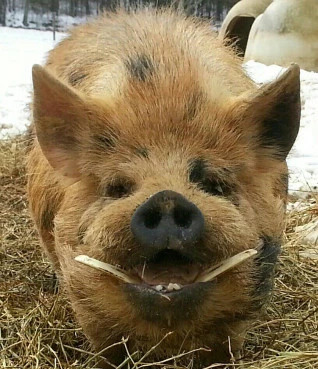
Paladin: Hereford Pig

Thief: Göttingen Minipig

Ranger: Duroc Pig
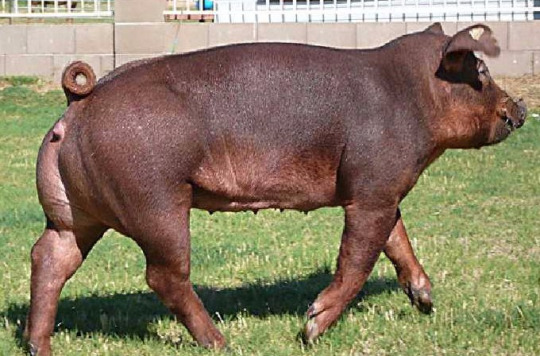
Bard: Mangalica

Wizard: Choctaw Hog
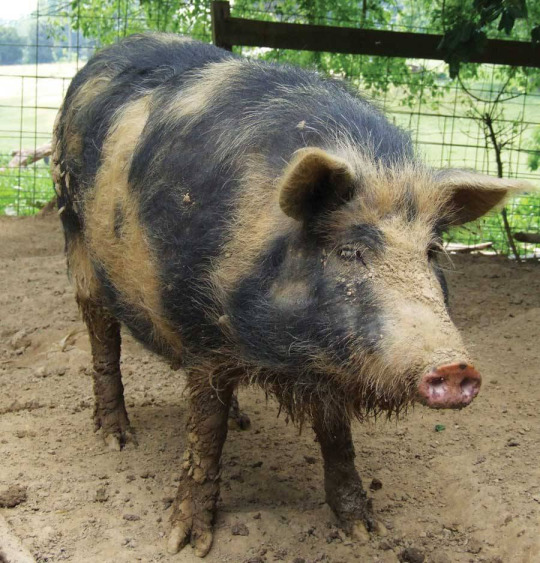
Sorcerer: Danish Protest Pig
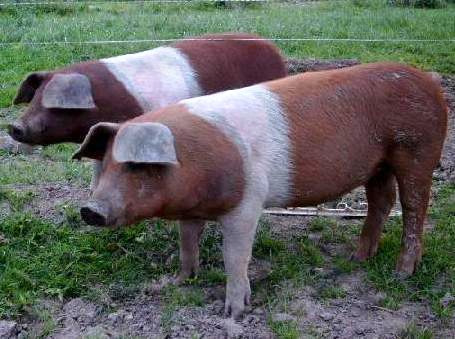
Warlock: Vietnamese Pot Bellied Pig
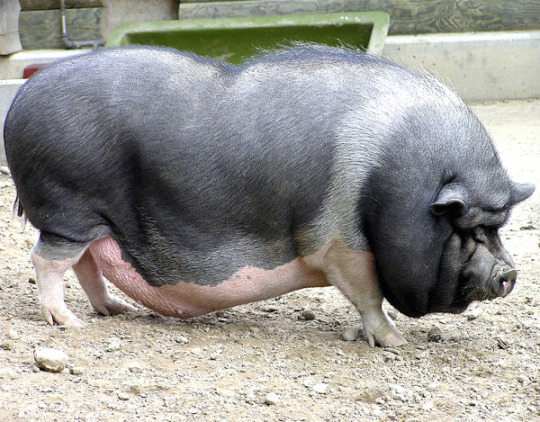
Cleric: Chester White
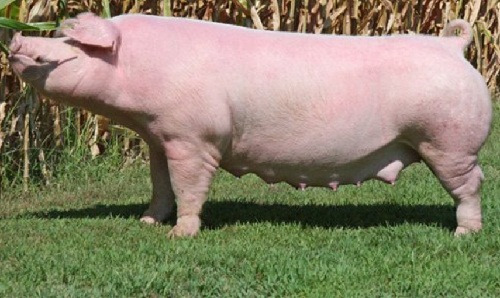
Monk: Mulefoot
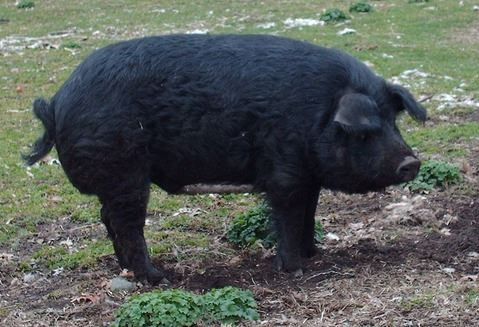
Druid: Meishan Pig
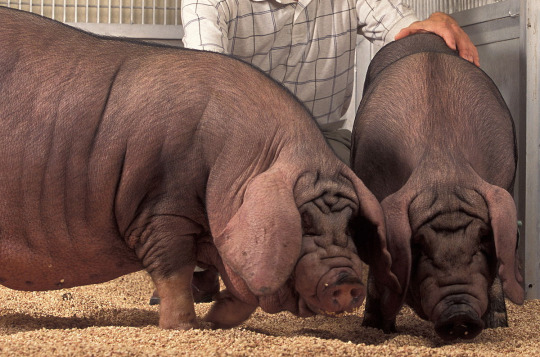
170 notes
·
View notes
Photo

The Catahoula Leopard Dog is a medium-large, short-coated dog, known for its many varied coat and eye colors and patterns. The word catahoula is of Choctaw origin and is translated to mean “sacred lake.” Catahoulas are the only breed of dog to have historically originated in the state of Louisiana. The breed requires firm guidance and early socialization, as they can be independent, territorial, and protective. For the same reasons, they do not allow mistreatment and will assert themselves in self-defense. Once they know their place in the family unit, they are affectionate, loyal, and gentle. Also called the Catahoula Hog Dog, they are used as stock dogs, bay dogs, tree dogs, watchdogs, guard dogs, and of course as loyal companions.
0 notes
Text
Top Ten Best Pig Breeds For C!Techno
(a super serious post by local pig enthusiast)
10. gloucestershire old spot: a very classic pig, it's got spots!
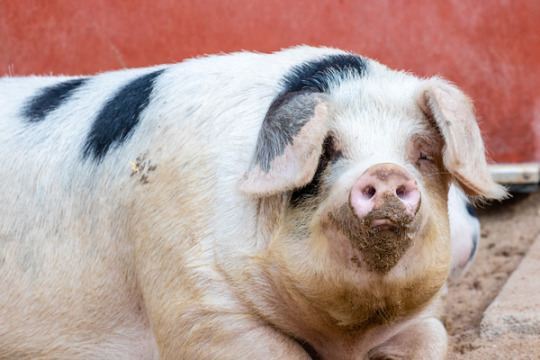
9. Wild Boar/Hog/Razorback: they're BIG! and tough!
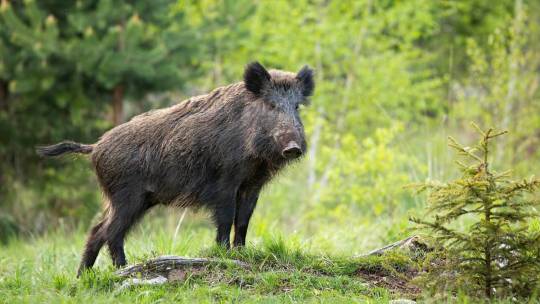
8. mangalica pig: they're curly and i think that's cute <3

7. tamworth pig: another classic pig but this one is RED
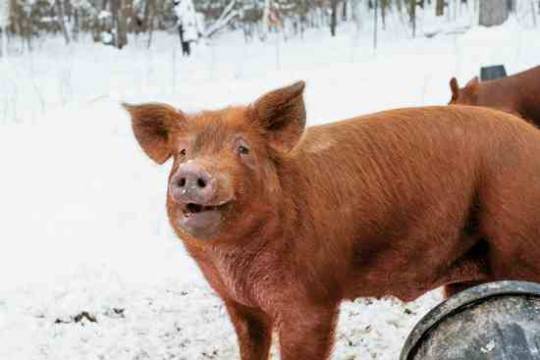
6. choctaw hog: i like how fluffy they are while still looking tough!

5. red river hog: okay this is a personal indulgence because look at those ears!! and the skull like white pattern!

4. british lop: perhaps THE most classic looking techno pig
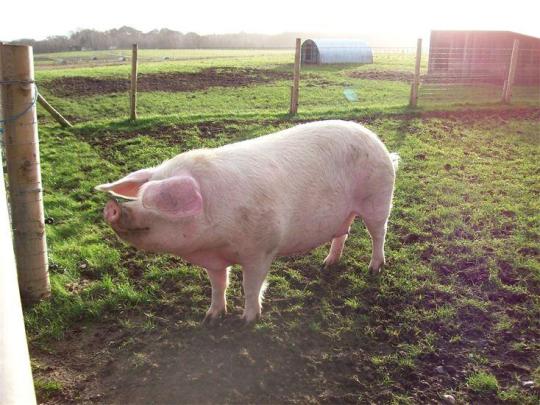
3. kunekune pig: fluffy, cute ears, tusks, what more could you want!

2. meishan pig: this is my personal favorite. look at those ears, look at that face! all the wrinkles!! they're so perfect.
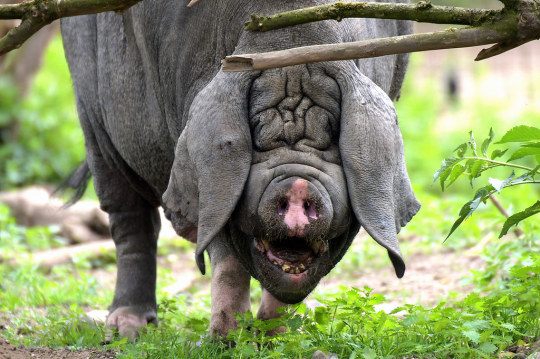
1. duroc pig: GOOD PIG!! just look at them!!!
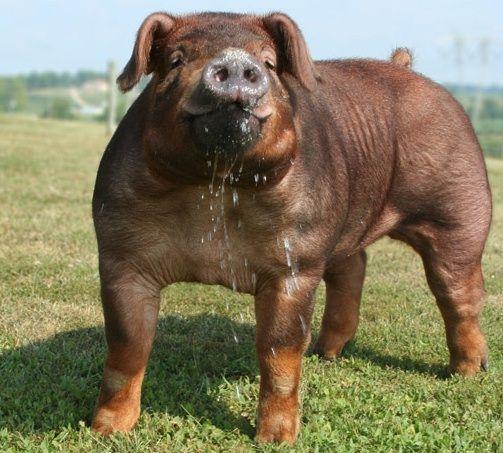
303 notes
·
View notes
Text
Syndactyl. It's to do with a PIG, not some species of dinosaur.
One of the more peculiar pigs on the planet has to be the Mulefoot hog, so named as it’s syndactyl. That is, it’s not cloven-hoofed: the two central digits on both the front and hind-feet are fused into one, similar to that seen on the mule. NOTE: the fact that it’s not cloven-hoofed however still doesn’t make it an acceptable addition to the diet of those religious maniacs with dietary laws as, like all pigs, it’s still an omnivore, not a ruminant. Poor sods eh? The people; not the pigs.
It’s a mutation and one that’s been seen before but it’s not that common: Aristotle reported on syndactyl pigs in Greece all the way back in 350 BC; later still, Gesner wrote about syndactyl pigs in England, Belgium and the Netherlands and Linnaeus in the 18th C. wrote about their occurrence in Sweden. Remains of syndactyl pigs have also been reported from various archaeological sites in England, Ireland, Wales and France.
© Diggin Dust Heritage Hogs 2015
Whilst the origins haven’t been tied down exactly, it’s likely the breed, like so many of the American “native” ones, actually descended from those same Spanish hogs starting to be brought to the Americas in the 1500s, that also gave birth to the Choctaw (and let’s not forget the marooned Ossabaw…) It shares some attributes with the former (inc. the single hooves) and the breeds very likely come from that same ancestral stock. Until the late 1800s they were after all only loosely selected and managed; not much was done to enhance or improve the breeds and they were pretty much left just to forage for themselves.
This specific Mulefoot mutation was first recorded as showing up around the 1900s in the southwest USA & Mexico. It also became known as the “Ozark hog” in Missouri and Arkansas. For a while, it was hugely popular as, like a lot of its cousins, it’s tough, productive & easy to fatten. Curiously — and like other syndactyl pigs — it was for a time (unfortunately, erroneously as it turned out) believed to be immune to foot and mouth disease, swine fever and cholera, which would have helped encourage its popularity with breeders. However, this single hoof did help alleviate the threat of foot rot, thus making it more suitable for wetter, boggy areas.
In the 1800s there was a huge demand for hogs to help fuel the relentless westward expansion and this breed helped the settlers in their onward travel. So, by the first third of the 20th Century, Mulefoot hogs were to be found distributed all throughout the Corn Belt. They were also common along the Mississippi River Valley, where farmers annually moved their hogs onto islands in the river, putting them out to safely forage there in the springtime then returning to collect them in the fall — this practice was however terminated by the Army Corps of Engineers in the 1950’s…
The National Mulefoot Hog Record association was organised in Indianapolis, Indiana, in January 1908. There was sufficient demand (and numbers) that two additional registries were also founded. By 1910 there were 235 breeders registered over twenty-two states. Mulefoots were also taken to Canada between 1900 and 1920 “although there no attempt was made to establish a herd book and pedigree records were not maintained”, according to J.W. MacEwan in The Breeds of Farm Livestock in Canada. They’re still being bred there, this photo taken from a small organic farm near Pilot Mound, Manitoba called Harborside Farms:
But breeding “fashions” change and like so many of these similar heritage, now rare, breeds across both the States and here in England, the newer larger, faster growing, less fatty pigs, were preferred and the Mulefoot slowly declined and almost ceased to exist.
That they didn’t was mainly thanks to the efforts all through the ’60s and ’70s, of an Mr. R. M. Holiday from Louisiana who introduced the genes into a new herd, to establish what would become the last group of purebred Mulefoot hogs. He acquired further stock around 1964 from all the then known purebred breeders, and used selective breeding– although in 1976 he also managed to introduce split hooves, ‘prick’ ears and wattles (!) by swapping some of his pigs with a dealer from North Dakota, a mistake he never repeated — to try and maintain the standard.
By 1976, the registries for the breed had closed; subsequently the herd books, pedigrees and other registration information were all lost.
In 1993, Mark Fields of the American Livestock Breeds Conservancy (later The Livestock Conservancy) had begun working with Holiday to re-establish the breed registry and expand breeding programs to additional farms. Despite these ongoing efforts it’s still on the “critically endangered” list [a categorisation given to breeds with a population of fewer than 2,000 and yearly registrations of fewer than 200] and there are still only around 300 breeding hogs in existence today.
In 2006, having worked the herd for over 40 years, the venerable Holiday decided to retire and sold off the last of his stock to the Maveric Heritage Ranch Co. He lived until he was 96, dying only in 2013. Maveric now own the largest herd of American Mulefoot hogs in the Americas and have started over 40 US breeders with Mulefoot stock. The team there also breed Guinea Hogs and they’ve established a close working relationship with the American Mulefoot Hog Association to jointly carry on with breeding and expansion programs and, like the Ossabaw, Choctaw and Red Wattle, they’re now being encouraged in this genetic quest by the growing number of chefs and cooks around the country using them in their dishes as well as the addition of the breed to the Slow Foods Ark of Taste.
Beautiful looking pigs. Like the Ossabaw from the previous piece; these little darlings come off the fire pit looking hugely edible…
© The Virtual Webber Bulletin Board/Chad M 2013
© The Virtual Webber Bulletin Board/Chad M 2013
Ref:
Madgwick, R., Forest, V. & Beglane, F. 2011. Syndactyly in pigs: a review of previous research and the presentation of eight archaeological specimens. International Journal of Osteoarchaeology doi:10.1002/oa.1260
Syndactyl. It’s to do with a PIG, not some species of dinosaur. was originally published on Salute The Pig
0 notes
Text
Houses For Sale in Kingsbury, TX
14326 Us Hwy 90, Kingsbury, TX
Price: $939000
The majestic rock-walled entry invites you to the 113+ acre Circle JB ranch with a separate 2 car garage workshop, RV parking, loading pens/shoots, additional storage sheds, stocked ponds, trees, grasslands and great steel post fencing. A true hunter’s paradise with an abundance of deer, hogs, turkeys, and birds. The picturesque winding path leads to a Hill Country ranch house with many custom features and wonderful hillside views. The family room with a high vaulted ceiling and rock fireplace is perfect for family gatherings as it adjoins the dining and kitchen area. A spacious master bedroom and bath has lots of storage. A full Jack & Jill bathroom connects two of the bedrooms. One bedroom is used as an office. You will want to call this home! This country setting is all you hoped to find and then some.
380 Appling Rd, Kingsbury, TX
Price: $658476
a grand country home on 57.09 acres, a very spacious 2,839 sq.ft. home 4 bedrooms,2.5 baths a very open and inviting floor plan. new engineered wood flooring in main part of home, high ceilings, fans, large master bedroom, master bath has double vanity,whirlpool tub, separate large title shower, large back patio covered opens to in-ground pool, vinyl fencing encloses backyard, commercial grade metal roofing, metal studs 6″ on exterior walls, extra insulation in attic,windows are r19 double pain, 3 tankless water heaters, extremely low electrical bills, electric gate entrance, emt wiring throughout the home.
357 Hillje Rd, Kingsbury, TX
Price: $893500
Triple JJJ Ranch Charming country home with vintage gables, & a lg wrap around porch in Kingsbury, TX. Nestled in the center of San Marcos, New Braunfels, Sequin, Luling, & Lockhart & close to 130/Hwy I-10. Exceptional property on 116.04 acres, has a lg barn with electricity & water, workshop, loafing shed, 3 pastures for your horses, 5 springfed ponds, is fully fenced, plus offers a gated driveway. Interior has exposed ceiling beams, wainscoting, hardwood floors, plus an antique clawfoot tub.
11189 Fm 20, Kingsbury, TX
Price: $990000
4,323 sq. ft. Country Home on 25 acres. Extraordinary Views, Two Full Kitchens, Elevator, Granite Counters, Mesquite Wood Floors, Wrap-Around Porches, Negative Edge Pool, Observation Deck, & a 35x 60 Metal Building. Elegance & ergonomic home designs include a central vacuum system, 3 fireplaces, gas stoves, wood & glass-doored book cases, Murphy beds, wood & granite hutches, a granite topped desk, custom shelves/cabinets throughout, & a master shower with 8 different spray heads. Full alarm system with cameras you can view from your smartphone.
11851 E Highway 90, Kingsbury, TX
Price: $420000
Get away for country living on 30.6 acres. Great design features with a large floor to ceiling fireplace in the den.Brand new Aerobic Septic and 2 AC’s. Home has the ability to run on either Co-op water or the well water.Office with private outside entrance which could be converted to 4th bedroom. 60×60 Metal workshop and an additional barn for your choice of livestock. New roof installed with 25 year Owens-Corning comp. shingles. Outdoor fireplace.Close proximity to I-10 for easy commutes to Seguin, New Braunfels, San Antonio, or San Marcos. HOME WARRANTY is being provided by the selle r. Many mature Oak trees to provide shade for BBQ’S and outdoor entertaining. New Jeld Wen french doors le
11201 Fm 20, Kingsbury, TX
Price: $375000
Very quite, unique rolling farm country only 10 minutes to 130 Toll Road access. Lots of big trees, great views–can see buildings on the campus of Texas State. 20 minutes to San Marcos, Seguin, Lockhart and Luling. The main house has a large deck in front and guest house has nice outside sitting area. Lots of wildlife !!!! There is a dry spring on top of the hill that flowed from a rocky outcropping–numerous arrowheads have been found in the area and many more to be discovered.
10.57 Acres Choctaw, Kingsbury, TX
Price: $140000
10.5 Acres wooded corner property with storage building, electricity, water well and stock pond. Easy access to IH-10. Mobiles are not allowed but modular homes are.
626 Post Office, Kingsbury, TX
Price: $68500
Cute 1 Bedroom 1 Bath home in Kingsbury! New Engineered septic system! Tile floors! Fresh paint! Fenced backyard! Large concrete driveway! Call Joe Engbrock (830) 305-4866
1331 Woodrow Center Rd, Kingsbury, TX
Price: $180000
***65K Price Reduction*** Now $180,000. 1331 Woodrow Row, Kingsbury, TX 78638. 10 acres with a 4-2 beautiful custom built home, electric power, water well, septic tank, Gazebo and unfinished detached room with balcony. There is a easement to get into the property. Fence all around the ranch, seasonal pond, horses allowed.
3970 Fm 1339, Kingsbury, TX
Price: $255000
Quiet Country Living in Navarro ISD w/acreage for livestock. Lots of Shade Trees. Home sits next to York Creek. Enjoy the evening breezes from the covered porch. Quick access to Seguin, San Marcos, Austin and San Antonio. Property is centrally located to IH-10, IH-35 and I-30 Toll Road. Above-Ground Pool, Carport and Outdoor Shed included with Sale of Property.
560 Wade Rd, Kingsbury, TX
Price: $144900
nice 3 bedroom 2 bath modular home on a little over 3 acres. front entry deck and deck on rear of house. split master bedroom with full bath. open living and kitchen area. undeveloped land to the west and north. north of kingsbury near hwy 130.
Fm 20, Kingsbury, TX
Price: $2137500
This Farm/Ranch located at Fm 20, Kingsbury, TX is currently for sale and has been listed on theochomesearch for 51 days. This property is listed by Phyllis Browning Company for $2,137,500. The property has a lot size of 450.0 acres. Fm 20 is in the 78638 ZIP code in Kingsbury, TX.
Tbd Fm 20, Kingsbury, TX
Price: $350000
Big, open land with beautiful view to the South of Kingsbury Hills. York Creek is along one boundary. Fenced and Cross-fenced for cattle. Could make a weekend hunting retreat and place to ride dirt bikes and enjoy the outdoors. Majority of land is in flood plain of York Creek. Crystal Clear Water meter in place.
2300 Wade Rd, Kingsbury, TX
Price: $630000
Want to get away from Austin, Houston, and San Antonio? 85 Acres and home within a few minutes of SH 130! Three bedroom two bath home surrounded by nothing but pastures and a historic church. Situated in the quiet portion of Guadalupe Co. known as the York Creek Valley. Horse barn, chicken coop, RV hookup and cattle pens make this ready for whatever you want to do. York Creek is the eastern property line. Cattle graze on cleared portion; native land for hunting. Want to go to town–San Marcos, Seguin, Luling, and Lockhart are all within a 15 minute drive. Home has windows galore–no nee d for lights during the day! Front and back porches allow for wonderful sunrises and sunsets. Old house on property not inhabitable unless you decide differently–it has good bones!
Tbd Gander Slough, Kingsbury, TX
Price: $168000
nice 44 + acre place. ranched fenced. ag exempt. located in country just outside of luling. pond on property. nice trees.
4774 Old Lehman Rd, Kingsbury, TX
Price: $624900
20 acres! In Navarro School District. Primary residence is a custom built home with high ceilings to emulate and old Texas schoolhouse. The structure complimented with a stone silo which is part of the large master bedroom. Art Touches and metalwork throughout. One of a kind home as well as a studio that could double as a guesthouse. The guesthouse is made from shipping containers. The Steel Farmhouse is perhaps the most striking build and is very unique to the area.
286 Indian Springs Dr, Kingsbury, TX
Price: $173096
Investor opportunity! This property is being offered at Public Auction on 04-04-2017. Visit Auction.com now to see the Estimated Opening Bid, additional photos, Property Reports with Title information, Plat maps and Interior Inspection Reports when available. Auction.com markets Foreclosure Sale properties throughout Texas for banks, financial institutions and government agencies who are very motivated to see these properties sell to investors. The majority of these properties are priced below market value. Don’t miss this special opportunity to buy homes at wholesale prices! In additio n to this property, 110 other properties are scheduled for sale at this same Foreclosure Sale. In our online auctions and live Foreclosure Sales, Auction.com currently has 6 properties scheduled for sale in Guadalupe County and 763 throughout Texas. All properties and sale details can be found with a simple search at Auction.com. Create a FREE account today to find more properties like this one, save searches of properties that meet your investment criteria and have the properties you’re looking for emailed directly to you when posted in an upcoming sale event. To view the complete details of this exact property, click the Auction.com link below or paste the Property ID 2371673 into the search bar at Auction.com
195 Cheyenne, Kingsbury, TX
Price: $395000
Welcome home to your little piece of heaven on earth. This 4 br with 3 full baths, 10 acres to roam and play. Sellers updated everything that they can think of. Home features a 4th br that measures 20 X 21 that could also be used as a second living area. Ceramic tile floors, granite countertops, custom cabinets, plus private office upstairs, master has jetted garden tub, his/hers closets, large living room and views of backyard and wildlife, covered back porch, large shop, auto gate. * Required advanced notice to show.
2765 Sherrill Rd, Kingsbury, TX
Price: $524000
Great opportunity to own 4 cabins by San Marcos River. Cabins are used as short term rentals now and owner says they generate over $50k per year in revenue. Unrestricted acreage and room to add more cabins. Across the county Road from the San Marcos River allowing a county easement access to water. The neighboring two lots that border the river are also for sale (2769 Sherrill). Great views and easy access to toll 130, IH 35, and IH 10.
2769 Sherrill Rd, Kingsbury, TX
Price: $349000
Rare opportunity to own 8 unrestricted acres on the San Marcos River. These two lots together give you over 500 feet of easy river access. Great buildable spot at a higher elevation location with three 220 electric meters already installed. Perfect for RV’s, cabins, or your home. Enjoy life here with plenty of shade, large mature trees, drivable right to waters edge, great views, lots of Texas wild life, great fishing, canoeing, kayaking, and swimming. Looking to develop your own tubing business
from http://www.theochomesearch.com/houses-for-sale-in-kingsbury-tx/
0 notes
Link
Severe exposure, starvation and disease ravaged tribes during their forced migration to present-day Oklahoma.
In the early 1800s, the sovereign Cherokee nation covered a vast region that included northwest Georgia and adjacent land in Tennessee, North Carolina and Alabama. Under the terms of an 1819 treaty, the United States guaranteed that Cherokee land would be off-limits to white settlers forever.
Forever lasted less than 20 years.
Although the treaty mandated the removal of “all white people who have intruded, or may hereafter intrude, on the lands of the Cherokees,” the United States instead forcibly removed more than 15,000 Cherokees in 1838 and 1839. As many as 4,000 died of disease, starvation and exposure during their detention and forced migration through nine states that became known as the “Trail of Tears.”
Indian Removal Act Forces Tribes From Native Lands
Trail of Tears: Forced Native American Relocation (TV-PG; 3:21)
The Indian Removal Act signed by President Andrew Jackson in 1830 authorized the federal government to relocate tribes within state borders to unsettled land west of the Mississippi River. When white settlers encroached on Cherokee land to grow cotton and search for newly discovered gold, the United States ordered the Cherokee to join the Creek, Seminole, Choctaw and Chicksaw tribes in resettling to present-day Oklahoma.
The first Cherokees to relocate—approximately 2,000 men, women and children split into four groups—did so voluntarily in 1837 and early 1838. They traveled westward by boat following the winding paths of the Tennessee, Ohio, Mississippi and Arkansas Rivers. The journey for these voluntary exiles was as short as 25 days, and deaths numbered less than two dozen.
Conditions proved far worse for the Cherokee evicted from their homes at gunpoint by 7,000 federal troops dispatched by President Martin Van Buren. Beginning on May 26, 1838, soldiers under the command of General Winfield Scott rounded up the majority of the Cherokee along with 1,500 slaves and free blacks, forced them to leave behind most of their possessions and herded them into wooden stockades and internment camps.
“Men working in the fields were arrested and driven to the stockades,” recalled Private John Burnett, who served as an interpreter. “Women were dragged from their homes by soldiers whose language they could not understand. Children were often separated from their parents and driven into the stockades with the sky for a blanket and the earth for a pillow. And often the old and infirm were prodded with bayonets to hasten them to the stockades.”
Reverend Daniel Butrick, a missionary who had ministered in the Cherokee territory for 20 years, wrote “from their first arrest they were obliged to live very much like brute animals, and during their travels, were obliged at night to lie down on the naked ground, in the open air, exposed to wind and rain, and herd together, men women and children, like droves of hogs, and in this way, many are hastening to a premature grave.”
Due to the poor sanitation of the internment camps, deadly diseases such as whooping cough, measles and dysentery spread among the Cherokee.
Extreme Weather Leads to Deaths
In June 1838, three military-led migrations departed present-day Chattanooga, Tennessee, to journey westward by both land and water. At gunpoint, the Cherokee were loaded onto boats that, according to Butrick, had “little, if any more room or accommodations than would be allowed to swine taken to market.”
Stifling summer heat and a record drought proved deadly as drinking water for both people and horses drew scarce. While only 21 Cherokee died in the four voluntary migrations, more than 200 perished in the three military-led expeditions.
The sweltering temperatures forced the suspension of the relocations, and when they resumed that fall, Scott agreed to let the Cherokee oversee the rest of the exodus. Under the agreement, the remaining Cherokee were divided into 13 groups of approximately 1,000 people each that were led by Cherokee conductors. Federal soldiers could only act as observers as a Cherokee police force kept order.
A map of the Trail of Tears.
These Cherokee-managed migrations were primarily land crossings, averaging 10 miles a day across various routes. Some groups, however, took more than four months to make the 800-mile journey. The three-mile-long Cherokee caravans required days to make river crossings and included one wagon for approximately every 20 people.
While the oldest, youngest and sickest exiles rode in wagons, most made the crossing on foot, slogging through mud and snow. “Even aged females, apparently nearly ready to drop into the grave, were traveling with heavy burdens attached to the back,” recorded one traveler who encountered the Cherokee in Kentucky.
The Cherokee were ill-equipped for the grueling hike. “We had no shoes,” noted Trail of Tears survivor Rebecca Neugin, “and those that wore anything wore moccasins made of deer hide.” They were also malnourished, sustaining themselves on a daily menu of salt pork and flour. “The people got so tired of eating salt pork on the journey that my father would walk through the woods as we traveled, hunting for turkeys and deer which we brought into camp to feed us,” Neugin recalled.
Ice and Snow Make Travel Dangerous
During winter months, Native Americans had to camp and sleep in deep snow and ice for months.
Scott’s summertime delay caused the Cherokee to march into the teeth of one of the worst winters on record. “We are compelled to cut through the ice to get water for ourselves and animals,” wrote commissary agent Nathan Davis. Ice flowing down the Mississippi River made it too treacherous to cross, forcing the Cherokee to camp and sleep in deep snow and ice for weeks at a time.
One group took nearly three months to cover the 65 miles in southern Illinois between the Ohio and Mississippi Rivers. The dysentery and diarrhea that tore through the campsites and the harsh winter conditions claimed the lives of many, particularly children and the elderly, who were buried in makeshift graves along the way.
The last of the Cherokee completed the Trail of Tears in March 1839. Decades later, a Confederate soldier who participated in the forced migration recalled, “I fought through the Civil War and saw men shot to pieces and slaughtered by the thousands, but the Cherokee removal was the cruelest work I ever knew.”
from Stories - HISTORY https://ift.tt/2pGYcD8
November 07, 2019 at 09:37PM
0 notes
Text
Catahoula Leopard Dog
Louisiana's "hog dog" is a jambalaya of local American puppies, Spanish Mastiffs, and Greyhounds. Catahoulas had been created to song and force feral hogs and livestock when it became time to butcher them, and no longer pretty they're aggressively resolute of their work.
This tough but strikingly lovely canine could have a noticed, brindle, solid, or patched coat of many colors. other incredible bodily traits are his webbed feet, which permit him to swim properly and work in soft, marshy areas, and his eyes, which can be blue, green, brown, or amber. some Catahoulas have eyes which might be each a specific shade or "cracked" eyes: two different colorings inside the identical eye.
Befitting their background as herding and driving puppies, Catahoulas are cautious of strangers. they're shielding in their households and opinionated approximately who is and isn't honest. folks who stay with them say they may be fantastic judges of individual.
count on to provide this difficult-running and unbiased dog with at least an hour of strenuous exercising every day as well as firm steering in the course of schooling. when their exercising and management wishes are met, Catahoulas are loving, calm, and committed partners..
Named for a Choctaw Indian word meaning "sacred lake," the Catahoula originated in northern Louisiana close to Catahoula Lake. he is likely the fabricated from breedings among nearby dogs and the Bloodhounds, Mastiffs, and Greyhounds brought to the location by using Spanish explorers. they may be occasionally referred to as Catahoula curs, Catahoula leopard curs, or Catahoula hounds, however the name was officially changed to Louisiana Catahoula Leopard dog after they have become the country dog of Louisiana. The Catahoula was used to music and spherical up the wild hogs that roamed the forests, subsequently the name hog canine that he sometimes is going by.
The Louisiana Catahoula Cur association turned into formed in 1976, accompanied with the aid of the countrywide affiliation of Louisiana Catahoulas in 1977. different agencies are the Catahoula Cur Breeders association, which registers Catahoulas, and the american Catahoula affiliation, which matches to sell and keep the breed's conformation and operating capability thru indicates, clinics, trials and certified trying out. activities encompass Treeing, Hog Bay, Cow Bay, and Cow Trials. The breed was named nation canine of Louisiana in 1979.
The United Kennel club was the first country wide canine registry to understand the Catahoula, in 1995. The Catahoula entered the yank Kennel membership's basis inventory carrier, which maintains records for uncommon breeds, in 1996. It has now not yet met the requirements for AKC popularity and won't participate in AKC conformation activities.
The Catahoula is a unique dog with a charming historical past and strong operating capability. It isn't always ideal for lifestyles with every circle of relatives, however while you make a dedication to 1 and form a bond with him, you have got a steadfast protector and partner for life.
The proper Catahoula is not aggressive toward human beings. he is wary of strangers but by no means shy. With family participants, he's loving and defensive. adult males can be aggressive in the direction of other male puppies, and Catahoulas in wellknown work aggressively, a necessity in rounding up unruly hogs or livestock. Their instinct is to tune and herd game, and if that isn't always an option for them, they want a few different outlet for his or her power. Catahoulas are fantastic watchdogs and could bark a warning or otherwise go on alert on the technique of strangers. deal with them firmly but fairly. They do no longer accept mistreatment or bodily abuse.
Temperament is stricken by more than a few of things, inclusive of heredity, education, and socialization. dogs with satisfactory temperaments are curious and playful, willing to approach people and be held through them. select the middle-of-the-road doggy, no longer the only who is beating up his littermates or the only who is hiding inside the nook. usually meet as a minimum one of the mother and father-normally the mom is the one who's available-to ensure that they've excellent temperaments that you're secure with. meeting siblings or other loved ones of the dad and mom is likewise beneficial for comparing what a pup could be like when he grows up.
Like each canine, a Catahoula wishes early socialization-exposure to many specific people, sights, sounds, and studies-while he's young, and it have to retain all through his lifestyles. Socialization facilitates ensure that your Catahoula puppy grows as much as be a properly-rounded canine. Enrolling him in a pup kindergarten class is a exquisite start. Inviting traffic over regularly, and taking him to busy parks, stores that allow puppies, and on leisurely strolls to fulfill buddies will even help him polish his social skills.
0 notes
Link
When you boil it down to the nub, every citizen of Mississippi except bona fide members of the Mississippi Band of Choctaw Indians is an immigrant or descended from an immigrant. Even the Choctaws weren’t here when what the Weather Channel once called “the land mass between Alabama and Louisiana” was formed. That’s why staking out this turf as “ours” is a shaky proposition.
In any event, this state is not among those in a panic about being overtaken by outsiders. Candidates do try to whip up people on the topic of aliens, largely because fearmongering works so well. Actual census numbers, though, prove there has been no onslaught. The Hispanic population (not the same as immigrant, but comparable) rose from 2.9 percent to 3.1 percent in Mississippi from 2012 to 2015. Compare that to 25 percent in Florida, 31 percent in Arizona and 39 percent in California.
There are probably plenty of reasons why people from other countries don’t choose to relocate here, but one of them may be language. Mississippians tend to know grammar and proper usage, but we set our English books on the shelves long ago. Our communications are far more colorful, far more accurate, far more descriptive.
Take, well, “boil it down to the nub.” It won’t be in any textbook a person from Asia, Central America or Europe is used to study English. The phrase contains wonderfully interwoven images. Boiling reduces the volume of a liquid. A nub is the part of something that’s left when everything else is gone. So, boiling to the nub is the same as cutting to the chase, which is our movie-centered aphorism for “summary of essential information.”
Picture a class full of people learning English. If the instructor asks them to translate “summary of essential information,” they can handle it. If the instructor asks them to translate “boil it down to the nub,” they’re lost.
There are loads of linguistic puzzles to keep interlopers at bay. When one Mississippian says to another, “He’s as happy as if he had good sense,” we know what we mean. A person relocating from Tokyo would be hard-pressed to figure out. (Hard-pressed might present a challenge, too, given that hard means both “difficult” and “inflexible.” So would “figure out.”)
I once worked with a man who, if feeling sad, would not say, “I feel sad.” He would say he was, “lower than a snake’s belly in a wagon rut.”
Non-natives could process “sad.” The snake-belly version would be far more challenging.
“Crack the window,” is also something we say that gives people learning English some difficulty.
The dictionary defines “lazy.” We tend to say, “He won’t hit a lick at a snake.”
Our rural roots have given us other animal images: “Frustrated as a stump-tailed cow at fly time.” “Happy as a dead pig in the sunshine” and “Grinning like a possum with a sweet tater.” A visitor from France might well ask, “What’s a tater?” The proper reply would be “Pomme de Terre,” but “Grinning like a possum with a sweet Pomme de Terre” doesn’t quite have the cache.
Think about it. We Mississippians are constantly making statements to each other that defy literal, word for word, translation. “Aren’t you a sight for sore eyes?” “They need to mend fences.” “I have no ax to grind.” “Don’t fly off the handle.” “He’s barking up the wrong tree.” “That takes the cake.”
For some reason, we use copious amounts of swine imagery (in addition to dead ones in the sunshine).
“Holler like a stuck pig.” “Go whole hog.” “Even a blind hog finds an acorn now and then.”
There are shorter retorts that are challenging to people who might be trying to understand us. We say “tight” when we mean “frugal” or to describe a level of friendship. We talk about “piddling,” meaning wasting time; “falling out” meaning argue; “sorry,” meaning low-quality; “directly,” meaning in a little while; “aim to,” meaning intend.
Progressive people have translation apps on their smartphones. Just for kicks, if you have such an app, ask it to how to say, “Hand me that do-hicky over there,” into Spanish.
It’s a wonderful world, and one of the things that makes it wonderful (and challenging) is that even when people speak English, they don’t always speak the same English.
With no disrespect to those who struggle to master life and language in a new land, may we always cherish our peculiarities?
And if tempted to be mean to an immigrant, check yourself — don’t act like you ain’t got no raisin’.
Charlie Mitchell is a Mississippi journalist. Write to him at [email protected].
Follow HottyToddy.com on Instagram, Twitter and Snapchat @hottytoddynews. Like its Facebook page: If You Love Oxford and Ole Miss…
The post Mitchell: Language Books Tend To Gather Dust In Mississippi appeared first on HottyToddy.com.
0 notes